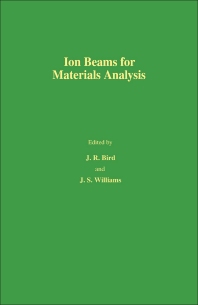Books in Engineering and technology
Books in Engineering and technology
The Engineering and Technology portfolio includes comprehensive overviews of all major research and practical developments in aerospace and automotive engineering, civil and environmental engineering, mechanical and industrial engineering, materials engineering, electrical engineering, communications engineering, and more. In-depth coverage, innovative state-of-the-art approaches, and real-world case studies provide valuable, actionable insights for researchers, applied engineers and students. The content in Elsevier's Engineering and Technology books program addresses core issues in industry and society, such as sustainability, the circular economy, AI, and automation.

Boundary Value Problems in Mechanics of Nonhomogeneous Fluids
- 1st Edition
- Volume 22
- S.N. Antontsev + 2 more
- English

Ion Beams for Materials Analysis
- 1st Edition
- J.R Bird + 1 more
- English

A History of the Photographic Lens
- 1st Edition
- Rudolf Kingslake
- English

Tribological Design of Machine Elements
- 1st Edition
- D. Berthe + 3 more
- English

Geophysical Data Analysis
- 1st Edition
- Volume 45
- William Menke
- English

An Introduction to Rheology
- 1st Edition
- Volume 3
- K. Walters
- English

Pipeline Design for Water Engineers
- 3rd Edition
- Volume 40
- D.J. Stephenson
- English

Laser Microfabrication
- 1st Edition
- Daniel J. Ehrlich + 1 more
- English

Model Based Process Control
- 1st Edition
- Volume 82
- T.J. McAvoy + 2 more
- English

Water Management in Reservoirs
- 1st Edition
- Volume 33
- L. Votruba + 1 more
- English